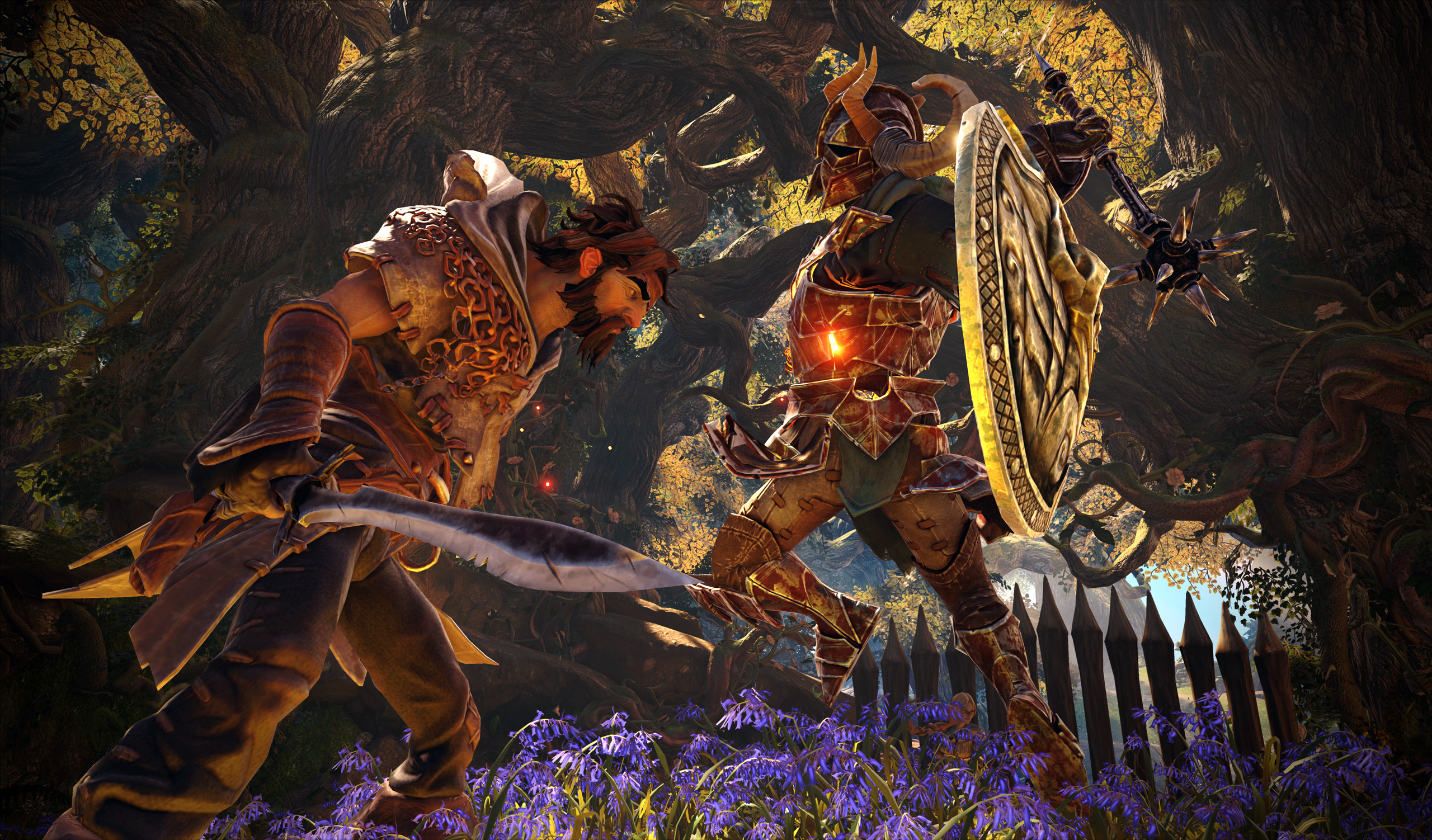The joy of villainy in Fable Legends

This article was originally published in PC Gamer issue 277. For more quality articles about all things PC gaming, you can subscribe now in the UK and the US.
The last time I played a Fable Legends villain, I was using an Xbox One controller. The button presses, trigger holds and analog stick cursor movement required for that role had been refined to an ergonomic sheen by a specialised Lionhead team driven by a desire to make a perfect RTS system on an Xbox One pad.
I did OK. I downed a few heroes, opened and closed a few gates, summoned an ogre. It was good fun.
This time, on a mouse and keyboard, I am become god. I’m not even that good at RTS games, but Fable’s small, complex arenas and concise palette of squads and mini-bosses mean that even a multitasking dunce such as I can master quick-click commands and hotkeys within a match or two.
This incarnation has been built from day one for PC play.
I am ordering my Outlaw Footpads to throw bottles of control-reversing potions at heroes, just as they try to dive out of the way of medieval artillery shells. I am remotely closing gates as groups of heroes funnel through them, trapping squishy support units alone in a room with suddenly uncloaked Puck assassins. I am laughing and laughing. I am alienating the entire room. It’s brilliant.
This is partial proof that Fable Legends has improved hugely by becoming Windows 10’s gaming flag-bearer. It’s what Microsoft is calling its ‘hero title’, arriving exclusively on the new OS with full cross-platform support, Xbox Live integration, and cross-play. The series may have its roots in console space, but this incarnation has been built from day one for PC play.

The continuity is of tone. It’s still a deeply British game—something its American director, David Eckelberry, happily brings up repeatedly, not least when he can’t understand a word Scouse warrior-nymph Evienne is saying. The story also sticks to the wider narrative, set in the same medieval world but some five centuries before the first Fable.
Keep up to date with the most important stories and the best deals, as picked by the PC Gamer team.
Lionhead’s changes to the formula, however, are widespread and fundamental. The game has shifted from the multi-faceted, moralistic RPG it once was to become an asymmetrical multiplayer showdown.
The hero team plays an arena-based, four-player battler, featuring moment-to-moment strategy, ability cooldowns, and distinctive heroes with wildly varied playstyles and personalities. Rook is a gruff soldier in exile, armed with a full-auto crossbow and the ability to resurrect from the brink of death. Newly-revealed Malice is a tortured ghost in a haunted set of armour who prefers resurrecting others, turning the souls of dead enemies into a controllable squadron of Shades. He acts differently, plays differently, even has a more zoomed-out camera than Rook, abandoning the precision of over-the-shoulder aim for something a little better suited to keeping an eye on multiple bodies.
Every hero has a quirk, a reason for you to favour them, and synergies that should make experienced teams practically unique.
The lone villain aims to stop the heroes reaching the end of the level. They play a miniaturised RTS that casts them first as level designer—silently placing creeps and traps across self-contained battlegrounds—and second as Dungeon Master, leading enemies to their deaths through bluffs, double-bluffs and full-frontal assaults. Meanwhile, a story plays out automatically in the background somewhere.

